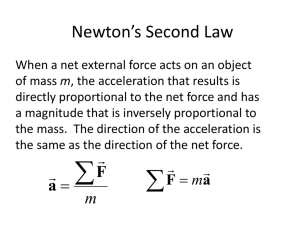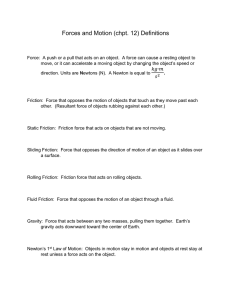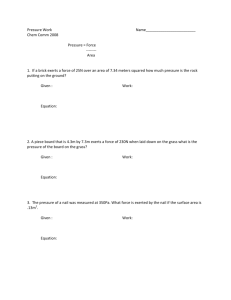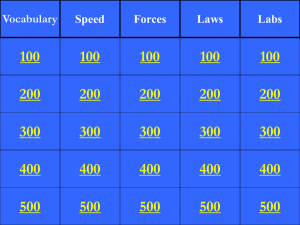µ
advertisement
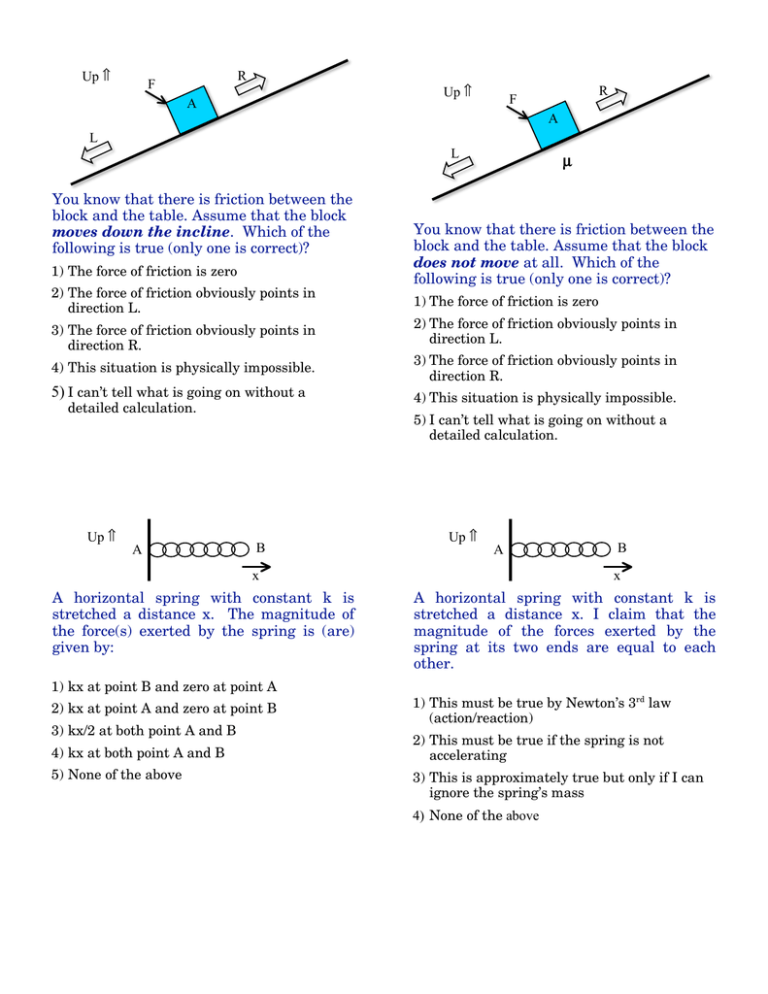
Up ! R F Up ! A A L L You know that there is friction between the block and the table. Assume that the block moves down the incline. Which of the following is true (only one is correct)? 1) The force of friction is zero 2) The force of friction obviously points in direction L. 3) The force of friction obviously points in direction R. 4) This situation is physically impossible. 5) I can’t tell what is going on without a detailed calculation. Up ! A R F µ You know that there is friction between the block and the table. Assume that the block does not move at all. Which of the following is true (only one is correct)? 1) The force of friction is zero 2) The force of friction obviously points in direction L. 3) The force of friction obviously points in direction R. 4) This situation is physically impossible. 5) I can’t tell what is going on without a detailed calculation. B Up ! A x A horizontal spring with constant k is stretched a distance x. The magnitude of the force(s) exerted by the spring is (are) given by: B x A horizontal spring with constant k is stretched a distance x. I claim that the magnitude of the forces exerted by the spring at its two ends are equal to each other. 1) kx at point B and zero at point A 2) kx at point A and zero at point B 3) kx/2 at both point A and B 4) kx at both point A and B 5) None of the above 1) This must be true by Newton’s 3rd law (action/reaction) 2) This must be true if the spring is not accelerating 3) This is approximately true but only if I can ignore the spring’s mass 4) None of the above A vertical spring with Up ! constant k is stretched a distance y. I claim that the magnitude of the forces exerted by the spring at its two ends are equal to each other. A A y 1) This must be true by Newton’s 3rd law (action/reaction) Two identical blocks are held up by two identical springs either in series (left) or in parallel (right) Which is true? 2) This must be true if the spring is not accelerating 1) In both cases, each spring holds up half of the mass and exerts a force of Mg/2. 3) This is approximately true but only if I can ignore the spring’s mass 2) In both cases, each spring exerts a force of Mg. 4) None of the above 3) In series, each spring exerts a force of Mg/2. In parallel, each spring exerts a force of Mg. 4) In series, each spring exerts a force of Mg. In parallel, each spring exerts a force of Mg/2. 5) This situation is physically impossible. 6) I can’t tell what is going on.
